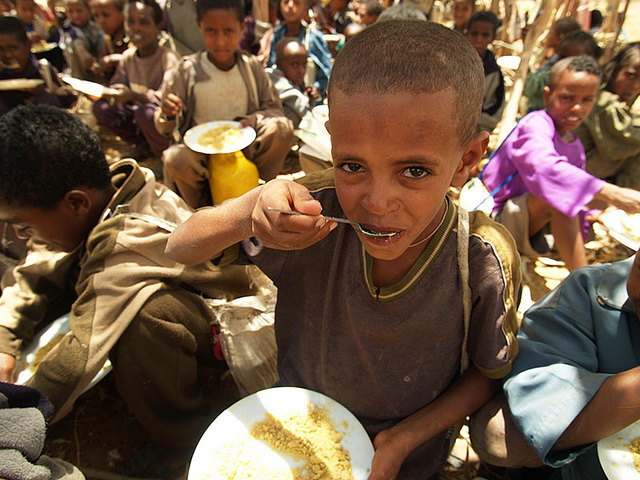In October 2014, the UN Committee on World Food Security (CFS) requested the High Level Panel of Experts on Food Security and Nutrition (HLPE) to conduct a study on Sustainable Agricultural Development for Food Security and Nutrition, including the role of Livestock. The findings of this study will feed into CFS 43 Plenary session (October 2016).
As part of the process of elaboration of its reports, the HLPE is organizing a consultation to seek inputs, suggestions, and comments on the present V0 draft. This open e-consultation will be used by the HLPE to further elaborate the report, which will then be submitted to external expert review, before finalization and approval by the HLPE Steering Committee.
HLPE V0 drafts are deliberately presented early enough in the process – as a work-in-progress, with their range of imperfections – to allow sufficient time to give proper consideration to the feedback received so that it can play a really useful role in the elaboration of the report. It is a key part of the scientific dialogue between the HLPE Project Team and Steering Committee, and the rest of the knowledge community. In that respect, the present V0 draft report also identifies areas for recommendations at a very early stage, and the HLPE would welcome suggestions or proposals.
In order to strengthen the report, the HLPE would welcome submission of material, evidence-based suggestions, references, and examples, in particular addressing the following important questions:
- The report is wide-ranging and comprehensive in analyzing the contribution of sustainable agricultural development to ensuring food security and nutrition (FSN), with a particular focus on the livestock sector because of its importance for both nutrition and sustainable futures. Do you think that the report is striking the right balance between agricultural development overall and the livestock sector specifically with respect to their relative contribution to FSN?
- The report is structured around context, trends, challenges and pathways/responses. Do you think that these are comprehensive enough, and adequately considered and articulated? Does the report strike the right balance of coverage across the various chapters? Are there important aspects that are missing?
- The report uses a classification to distinguish between four broad categories of livestock systems, in order to better identify specific challenges and sustainable development pathways for each of them. Do you find this approach useful for identifying specific policy responses and actions in different socio-economic and environmental contexts?
- The report has referenced key projections and scenario studies in identifying the drivers and trends through to 2050. Are there other studies that the report needs to reference, which offer different perspectives on the future outlook for the agriculture (including livestock) sector, in particular those that focus on nutrition and diet?
- The report has identified a wide range of challenges likely to be faced in the coming period to which policy makers and other stakeholders will need to take into account so that SADL can contribute to FSN. Do you think that there are other key challenges/opportunities that need to be covered in the report, including those related to emerging technologies, the concentration and intensification of production in livestock, and the implications for feedstuffs (crops and oilseeds), and international trade?
- A decision-making approach that could be useful for policy makers in designing and implementing policies and actions has been proposed in Chapter 4 of the report. Is this a useful and pragmatic approach?
- Chapter 4 also contains case studies/examples of evolutions of agricultural development policies and actions in different contexts/countries. Could you offer other practical, well-documented and significant examples to enrich and provide better balance to the variety of cases and the lessons learned in agricultural development, including the trade offs or win-win outcomes in terms of addressing the different dimensions of sustainability and FSN?
- The social dimension of sustainable agriculture development has often been less well described and understood, including due to lack of data. Examples and experiences on such issues (livelihoods, gender, share and situation of self employed versus wage workers, working conditions, etc.) would be of particular interest to the team.
- The upstream and downstream sectors are playing an increasingly important role in respect of the orientation of agricultural development, food choices and diets. Can you provide examples of the role these sectors play in sustainable agricultural development and FSN?
- What are the key policy initiatives or successful interventions to improve the sustainability of food systems, in different countries and contexts that merit discussion in the report? Is there evidence about the potential of economic incentives, and which ones (taxes, subsidies etc.), regulatory approaches, capacity building, R&D and voluntary actions by food system actors?
- The design and implementation of policies for FSN requires robust, comparative data over time and across countries. Where are the data gaps that governments, national and international organizations might need to address in the future in order to understand trends and formulate better policies?
- Are there any major omissions or gaps in the report? Are topics under-or over-represented in relation to their importance? Are any facts or conclusions refuted or questionable? If any of these are an issue, please send supporting evidence.
